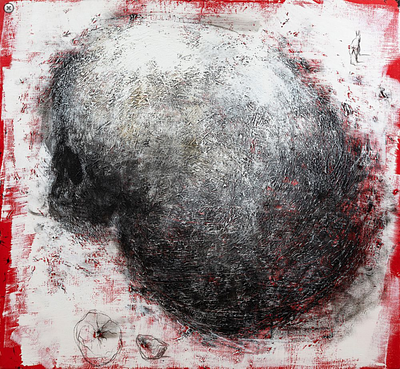JOSÉ LUIS PASCUAL SAMARANCH (Barcelona, 1947). "Homage to Magritte". 2005. Corten steel. Size: 240 x 100 x 140 cm.
Lot 116
About Seller
Setdart Auction House
Carrer Aragó 346
Barcelona
Spain
Setdart Subastas was born in 2004 and is currently the first online art auction in Spain with solidity, prestige and reliability guaranteed by our more than 60,000 users. Setdart has a young, dynamic and enterprising team ready to successfully manage the purchase and sale of art works through custom...Read more
Categories
Estimate:
EUR€5,000 - EUR€6,000
$5,208.33 - $6,250
Absentee vs Live bid
Two ways to bid:
- Leave a max absentee bid and the platform will bid on your behalf up to your maximum bid during the live auction.
- Bid live during the auction and your bids will be submitted real-time to the auctioneer.
Bid Increments
| Price | Bid Increment |
|---|---|
| EUR€0 | EUR€10 |
| EUR€200 | EUR€25 |
| EUR€500 | EUR€50 |
| EUR€1,000 | EUR€100 |
| EUR€3,000 | EUR€200 |
| EUR€5,000 | EUR€500 |
| EUR€10,000 | EUR€1,000 |
| EUR€20,000 | EUR€2,000 |
| EUR€50,000 | EUR€5,000 |
About Auction
By Setdart Auction House
Oct 19, 2021
Set Reminder
2021-10-19 08:00:00
2021-10-19 08:00:00
America/New_York
Bidsquare
Bidsquare : CONTEMPORARY ART
https://www.bidsquare.com/auctions/setdart-auction-house/contemporary-art-7701
Setdart Auction House sofia@setdart.com
Setdart Auction House sofia@setdart.com
- Lot Description
JOSÉ LUIS PASCUAL SAMARANCH (Barcelona, 1947). "Homage to Magritte". 2005. Corten steel. Size: 240 x 100 x 140 cm. In this sculpture, the profile of a character with a bowler hat is cut out in front of a door cut out with the profile of the same figure. The allusion to Magritte is clear, as a tribute that Pascual Samaranch pays to the surrealist painter, master of unfolded worlds and games of illusion. The Barcelona sculptor has developed his imaginary on the basis of the play of planes, shadows and silhouettes, which is once again evident in this piece. A painter, sculptor and engraver, José Luis Pascual studied architecture at the Escuela Técnica Superior de Barcelona, where he graduated in 1970. Since the beginning of his career, he has produced and edited several books, of which "Monografía destructiva sobre la comunicación gráfica" (1975) is the first. Since then he has produced other books and folders of lithographs and engravings, presented in such outstanding galleries as René Métras and Gaspar (Barcelona), or Sen (Madrid), in Biennials such as the International of São Paulo (1981) and Venice, and in other centres such as the Arnau Theatre in Barcelona (1986). He has also ventured into the disciplines of video art, sculpture and poster art, as well as creating several trencadís murals. Pascual has exhibited his work in Spain, Italy, Brazil, Belgium, Switzerland, France, the United States and Andorra, and develops a multidisciplinary figurative language based on the play of silhouettes and planes. His work evolved, from the 1970s onwards, from an expressionism limited to black and white to a language close to pop at the end of that decade, integrating colour and elements from comics. In the mid-1980s he began his period of wrought iron sculptures that describe profiles or silhouettes, as if they were the shadow of a figure, within a poetics that seeks to emphasise a kind of immateriality or lightness of the concept summarised in planes, with the almost total absence of volumes. When this repertoire is translated into painting, from the end of the eighties it acquires certain neo-expressionist tints, sometimes approaching abstraction, above all through the formal recourse of his zigzagging lines and the rhythmic decomposition of those sketchy profiles of his sculpture.
- Shipping Info
-
In-house shipping available. Please inquire at admin@setdart.com.
-
- Buyer's Premium



 EUR
EUR CAD
CAD AUD
AUD GBP
GBP MXN
MXN HKD
HKD CNY
CNY MYR
MYR SEK
SEK SGD
SGD CHF
CHF THB
THB


















